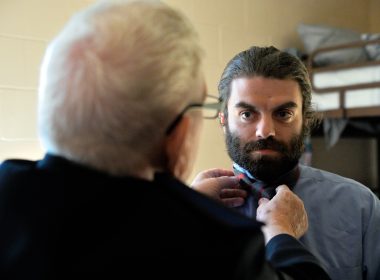Training officers in the 21st century
by Major Donald Hostetler –
We are twenty years past George Orwell’s 1984 and nearly a century deep into Aldous Huxley’s Brave New World. The training of Salvationists for a life of service as Salvation Army officers has never been more complex than in this environment of growing multiculturalism, sophisticated information technologies, expanded human services, heightened scrutiny of management practices, and the like. Jesus Christ is the same yesterday, today and forever—but the methods of presenting the gospel of his salvation change from one generation to the next.
When the College for Officer Training moved to Crestmont thirty years ago, no one could have envisioned that cadets would not only have access to a library of more than 40,000 volumes but also conduct research on laptop computers utilizing wireless Internet connections. In fact, who could possibly have foreseen the dramatic change the computer has wrought in the fabric of The Salvation Army? Official correspondence travels via e-mail; financial records are maintained on a central server; even the officer’s ministry development plan is administered electronically.
Multi-dimensional program
The training program must acknowledge these field realities and prepare cadets to fully use all the systems at an officer’s disposal. The purpose of the multi-dimensional program is to develop men and women in knowledge, capabilities, spirit and character, who will be able to sustain and advance the mission of The Salvation Army in the salvation of the world.
Knowledge is developed through rigorous academic instruction. We are licensed and accredited to grant an Associate of Arts degree in Ministry. Classroom instruction relies upon officers and other Christian instructors who combine academic credentials with a strong sense of calling to serve Christ. Although basic classroom instruction has changed little over the years, we have made considerable strides to accommodate the learning patterns of adult learners. The majority of cadets are now “second career” people who are years removed from their last formal educational setting, so instructional methods must recognize the needs of the older student.
Capabilities are built through the practice of ministry, leadership and administrative skills in a variety of field training applications: weekday field training and weekend team ministry assignments during the academic year; extended internships during summer and during the Christmas season; public ministry in on-campus worship; and annual spring campaign visits to field locations throughout the territory.
Spiritual formation
Spiritual formation is an intentional element of the training program and is integrated into other aspects of training. Cadets grow in likeness unto Christ as they learn, as they pray with one another, as they preach and hear the Word of God, as they hold themselves accountable to a staff mentor, even as they serve one another in the performance of the drudgery of daily house duties. Curiously, technology serves in character formation—discipleship materials are placed on the college computer server so that access is constant.
It may well be said that the training college’s most important outcome is the most difficult to measure: spirit. The International Orders and Regulations for the Training of Salvation Army officers puts as the supreme aim of training the development of “officers of such Blood and Fire spirit that they will be enabled to sustain and advance the purposes of The Salvation Army.” We endeavor to inculcate a “Blood and Fire spirit” that will use every means to introduce the Savior to a lost and dying world, that will exhaust every resource to serve the poor and needy whom Jesus loves, that will extend every grace to build up the Body of Christ.
Meredith Wilson asks it this way: “Could you love the unloved, never reckoning the cost, giving them comfort and care? Could you seek the unloved, in the legion of the lost, sharing their grief and despair? That’s the creed of an Army, a God-fearing Army, with banners and bonnets they come. Yes, to love the unloved in the spirit of the Lord, marching with trumpet and drum, with banners and bonnets they come!”
In the 21st century, it is no longer banners and bonnets that are our tools and trademarks so much as websites and DVDs. In the 21st century, the trumpet and drum are heard on the new “town square” of the public airwaves more than on cobblestone streets. But the most important commodity of the College for Officer Training remains the same: Blood and Fire officers who are sold out for Jesus.











